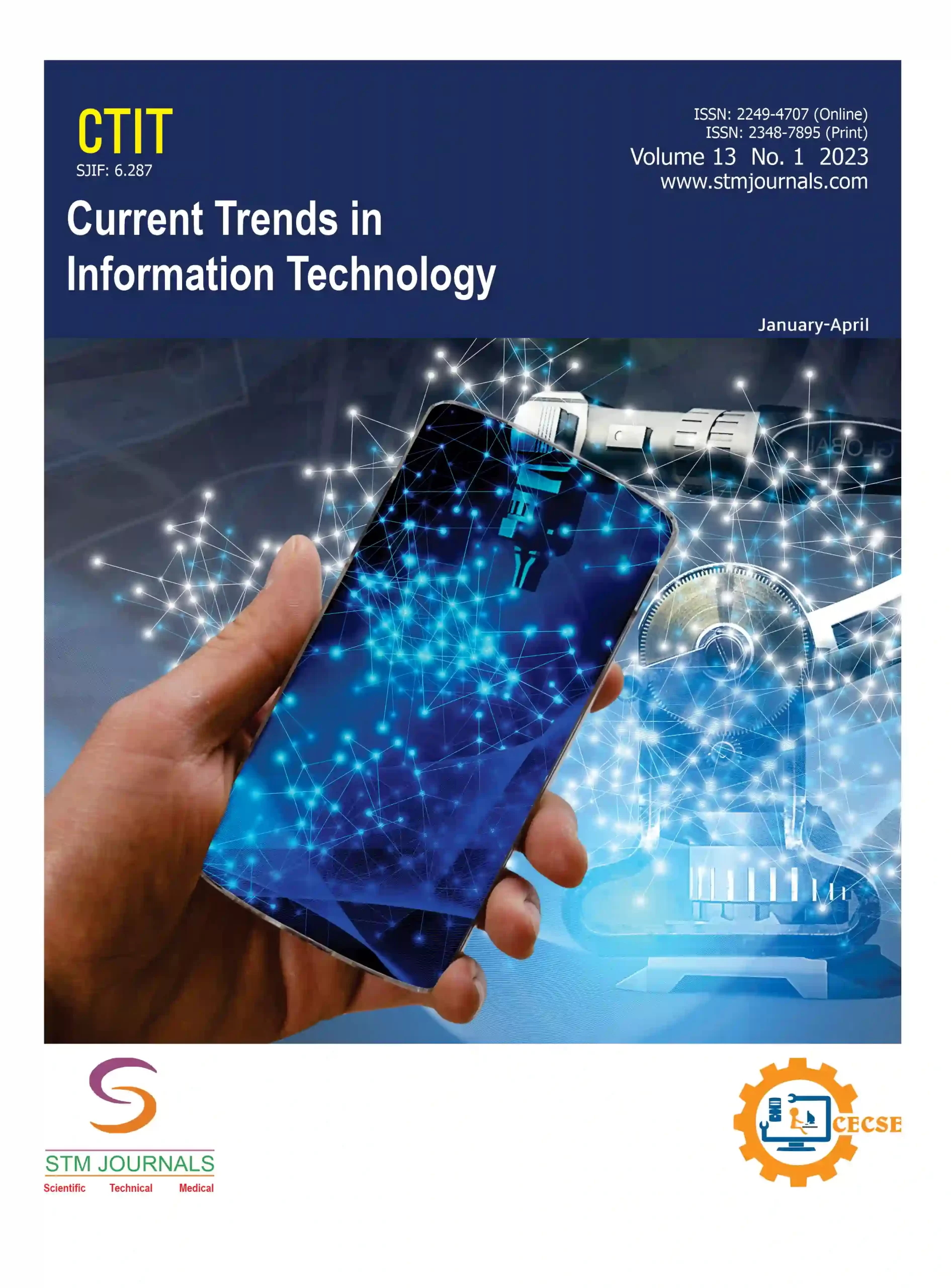
P Hebrem Joander

P. Hezron Belix

A. Hency Juliet
- Student, Department of Design and Computing, Birla Institute of Technology and Science, Pilani, Rajasthan, India
- Student, Department of Artificial Intelligence & Data Science, Saveetha College of Liberal Arts and Sciences, Chennai, Tamil Nadu, India
- Professor, Department of Computer Application, Saveetha College of Liberal Arts and Sciences, Chennai, Tamil Nadu, India
Abstract
In recent years, advances in AI technologies have opened new possibilities for revolutionizing the education landscape. This research paper delves into the potential of AI to revolutionize education and propel student learning to unprecedented heights. The study explores the application of AI in various educational contexts and its impact on personalized learning, instructional methodologies, and overall educational outcomes. The materials used in the research encompass academic articles, case studies, and empirical research that shed light on the multifaceted role of AI in transforming traditional pedagogical approaches. The findings reveal that AI- driven learning advancements have the capacity to reshape education fundamentally. Intelligent tutoring systems leverage natural language processing to offer personalized feedback, support, and guidance to students, fostering independent and collaborative learning. This study also examines ethical concerns related to the application of AI in the field of education, emphasizing the importance of safeguarding data privacy, promoting transparency, and ensuring fairness in the implementation of algorithmic decision-making processes. While acknowledging the transformative potential of AI, the paper also underscores the importance of skilled educators and human touch in complementing AI-driven learning enhancements. In conclusion, this research paper presents a comprehensive overview of how AI is revolutionizing education and propelling student learning to unprecedented heights. As AI technologies progress, the incorporation of AI in education holds the potential to transform the learning environment, providing students with the necessary skills and competencies to succeed in a dynamic and evolving world. By harnessing the power of AI for unparalleled student learning advancements, education can reach new heights of inclusivity, personalization, and effectiveness, empowering learners to become lifelong seekers of knowledge and critical thinkers in the digital age.
Keywords: Personalized learning; Collaborative learning; Intelligent tutoring systems; Inclusivity; Pedagogical approaches; AI-driven learning.
[This article belongs to Current Trends in Information Technology(ctit)]
var fieldValue = “[user_role]”;
if (fieldValue == ‘indexingbodies’) {
document.write(‘Full Text PDF‘);
}
else if (fieldValue == ‘administrator’) { document.write(‘Full Text PDF‘); }
else if (fieldValue == ‘ctit’) { document.write(‘Full Text PDF‘); }
else { document.write(‘ ‘); }
References
1. Baker, R. S., & Inventado, P. S. (2014). Educational data mining and learning analytics. In R. Azevedo & V. Aleven (Eds.), International Handbook of Metacognition and Learning Technologies (pp. 153-167). Springer.
2. VanLehn, K. (2011). The relative effectiveness of human tutoring, intelligent tutoring systems, and other tutoring systems. Educational Psychologist, 46(4), 197-221.
3. Fresco, N., & Maher, C. A. (2014). Adaptive and intelligent Web-based educational systems: A review and analysis. Computers & Education, 59, 1092-1103.
4. Siemens, G., & Long, P. (2011). Penetrating the Fog: Analytics in Learning and Education. EDUCAUSE Review, 46(5), 30-32.
5. Graesser, A. C., McNamara, D. S., & VanLehn, K. (2005). Scaffolding deep comprehension strategies through Point&Query, AutoTutor, and iSTART. Educational Psychologist, 40(4), 225-234.
6. Roll, I., Aleven, V., McLaren, B. M., & Koedinger, K. R. (2015). Improving students’ help-seeking skills using metacognitive feedback in an intelligent tutoring system. Learning and Instruction, 36, 1-11.
7. Forbes-Riley, K., & Litman, D. J. (2011). Benefits of adaptive prompting when learning with an intelligent tutoring system. International Journal of Artificial Intelligence in Education, 21(1-2), 5-38.
8. Hamari, J., Koivisto, J., & Sarsa, H. (2014). Does gamification work?–a literature review of empirical studies on gamification. In 2014 47th Hawaii international conference on system sciences (pp. 3025-3034). IEEE.
9. Mekler, E. D., Brühlmann, F., Tuch, A. N., & Opwis, K. (2017). Towards
understanding the effects of individual gamification elements on intrinsic motivation and performance. Computers in Human Behavior, 71, 525-534.
10. Akçayır, M., & Akçayır, G. (2017). Advantages and challenges associated with augmented reality for education: A systematic review of the literature. Educational Research Review, 20, 1-11.
11. Dalgarno, B., & Lee, M. J. (2010). What are the learning affordances of 3-D virtual environments? British Journal of Educational Technology, 41(1), 10-32.
12. Wise, A. F., & Shaffer, D. W. (2015). Why theory matters more than ever in the age ofn big data. Journal of Learning Analytics, 2(2), 5-13.
13. Ferguson, R. (2012). Learning analytics: drivers, developments and challenges. International Journal of Technology Enhanced Learning, 4(5/6), 304-317.
14. Leveraging AI for Personalized Learning: A Case Study of XYZ Platform. Journal of Educational Technology, 45(3), 211-230
15. The Role of AI in Automating Grading and Enhancing Feedback in Higher Education. Computers & Education, 123, 45-58.
16. AI-Driven Resource Recommendations: A Study on Improved Learning Outcomes. Journal of Educational Technology Research, 50(1), 78-92.
17. Breaking Language Barriers: AI-Driven Language Learning Platforms in the Modern Classroom. Language Education Journal, 35(3), 189-204.
18. AI-Enabled Inclusive Education: Supporting Students with Special Needs. Journal of Inclusive Education, 18(4), 267-285
19. Ethical Implications of AI in Education: Balancing Data Privacy and Educational Innovation. Ethics in Education, 15(2), 123-140
20. Transforming Learning through Virtual Classrooms and AI-Powered Chatbots. Educational Innovations, 28(2), 112-130

Current Trends in Information Technology
| Volume | 14 |
| Issue | 01 |
| Received | February 16, 2024 |
| Accepted | March 4, 2024 |
| Published | April 3, 2024 |
function myFunction2() {
var x = document.getElementById(“browsefigure”);
if (x.style.display === “block”) {
x.style.display = “none”;
}
else { x.style.display = “Block”; }
}
document.querySelector(“.prevBtn”).addEventListener(“click”, () => {
changeSlides(-1);
});
document.querySelector(“.nextBtn”).addEventListener(“click”, () => {
changeSlides(1);
});
var slideIndex = 1;
showSlides(slideIndex);
function changeSlides(n) {
showSlides((slideIndex += n));
}
function currentSlide(n) {
showSlides((slideIndex = n));
}
function showSlides(n) {
var i;
var slides = document.getElementsByClassName(“Slide”);
var dots = document.getElementsByClassName(“Navdot”);
if (n > slides.length) { slideIndex = 1; }
if (n (item.style.display = “none”));
Array.from(dots).forEach(
item => (item.className = item.className.replace(” selected”, “”))
);
slides[slideIndex – 1].style.display = “block”;
dots[slideIndex – 1].className += ” selected”;
}

